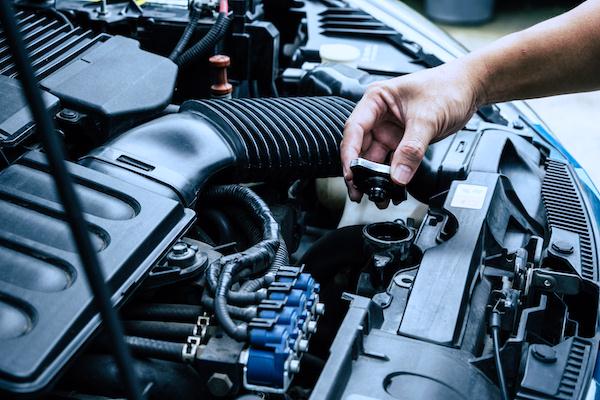Even though the circuit is simpler than car electricity, the components in a motorbike electrical system cannot be said to be small.
Just look at the front of the motorbike, apart from the lights we also find indicator panels that are included in the motorbike’s electrical system. Moreover, if our motorbike has EFI technology, the electrical scheme will definitely become more complicated.
However, in this article we will thoroughly discuss all components of the motorbike electrical system and their respective functions. In general, electrical system components are divided into four groups, namely:
- Power source
- Controls
- Load
- Wiring
But each such group has several more components. Please read the continuation of this article for more details.
Motorcycle Electrical System Components and Their Functions
1. Battery
The battery is a current source for the motorbike electrical system. However, on motorbikes the function of the battery is actually not that important because this battery is only needed when we turn on the electrical system while the engine is still off. For example in the starter system.
This is because the main electric current supply will be met by the spool component as the alternator which produces electricity. When the spool is working, the battery’s function is no longer as a current source but as a store of electric current.
Even though the motorbike battery is smaller than a car battery, the voltage is still the same, namely 12 volts. The only difference is the power of the battery, motorbike batteries that are smaller in size obviously also have less power.
2. Spool and kiprok
The next component is also included in the motor’s electrical power supply. The spool functions like a generator whose job is to produce electric current, while the kiprok or regulator is tasked with regulating the electricity produced by the spool.
Why does the electricity from the spool have to pass through the regulator?
This is because the electric current produced is not constant at one voltage point. This electrical voltage varies depending on the engine RPM, meaning that when the RPM is low the voltage is also low (below 12 V), likewise when the RPM is high the voltage formed is more than 14 volts.
Kiprok’s job is to prevent overcharging to protect the electrical circuit.
3. Switches and Modules
A switch is a switch that functions as a place to activate an electrical system. We can find this switch on the motorbike handlebars, there are many switches which are dominated by light switches.
Some switches on motorbikes in general are as follows;
- Headlight switch (low beam)
- High beam light switch
- Left and right turn signal switch
- Horn switch
- Starter Switch
- Flash light switch (optional)
Apart from switches, there are also control components that move automatically. The name is a module, the function of this module is actually almost the same as a manual switch, namely to activate an electrical system automatically according to the conditions set.
This means that we don’t need to activate it manually. For example, you can see the engine management system found on injection motorbikes.
There, the fuel system is driven by the ECU which can regulate the gasoline supply automatically.
4. Wiring
Wiring or cable is a series of cables that function to connect electric current from the power source through the switch and to the load.
Because there are many types of motorbike electrical systems, the wiring is also differentiated using a color system. For example, to determine the period, the cable used is black, whereas the cable containing the power source is usually red.
This color differentiation system is intended to make it easier to detect problems if there is an electrical problem on the motorbike.
5. Load
Load is the spearhead of an electrical circuit which functions to change energy from electricity into the desired energy.
Inside the motorbike there are many loads such as lights. Lamps (bulbs/LEDs) are loads that convert electrical energy into light. Apart from that, there is also a horn that converts electrical energy into sound.
Apart from the body area, we can also find loads on the engine. For example, spark plugs which convert electrical energy into sparks and injectors which convert electrical energy into valve opening movement.
6. Network protection
Another component that is no less important in the motorbike electrical system is the circuit safety component.
The components included in this safety are fuses and relays. The fuse will prevent excessive electric current flowing which could cause a fire in an electrical circuit.
Meanwhile relays are used to protect a group of switch components from large currents. These two components cannot be separated from an electrical system in both cars and motorbikes.
This is a complete and clear article regarding motorbike electrical system components. Hopefully it can broaden our knowledge and be useful for all of us.











